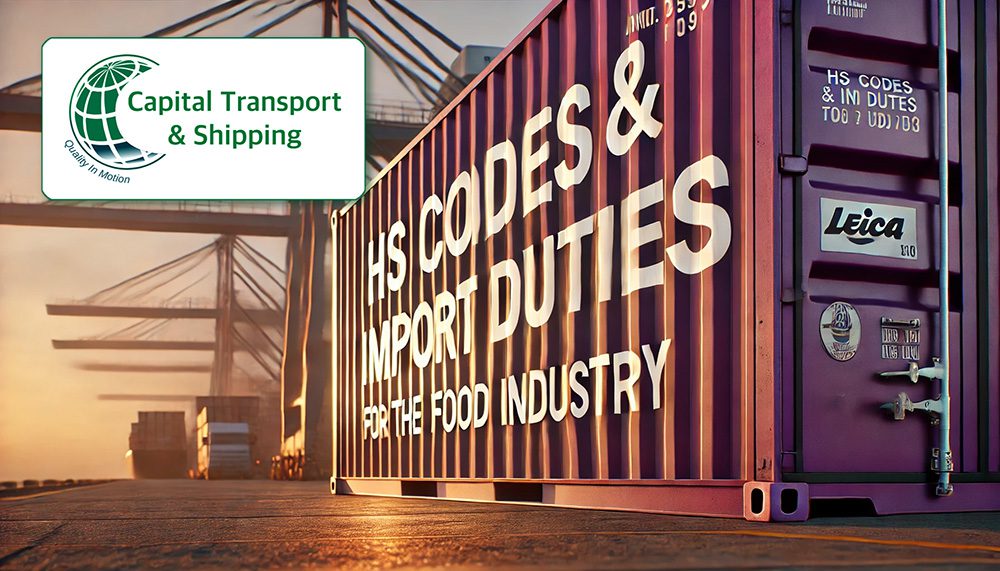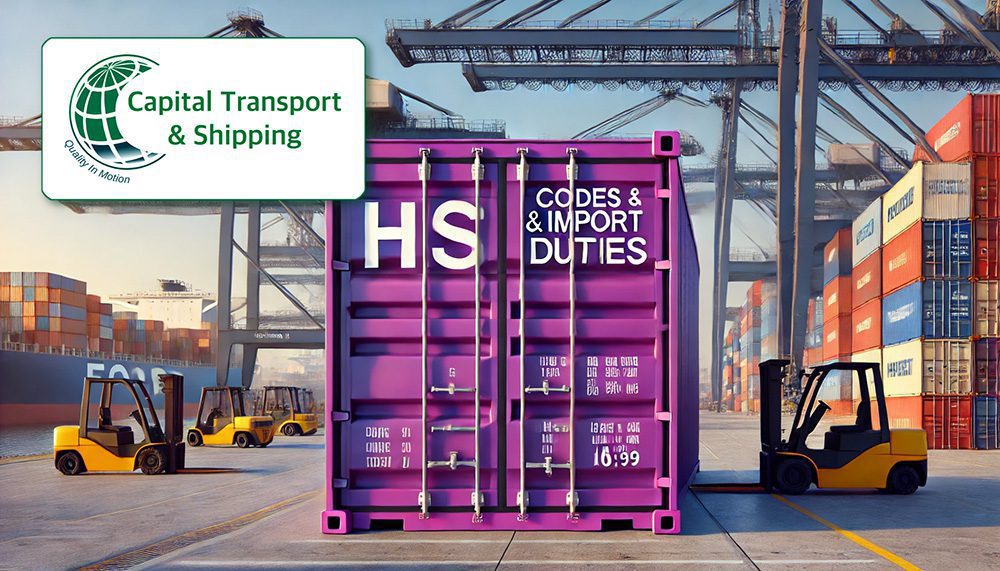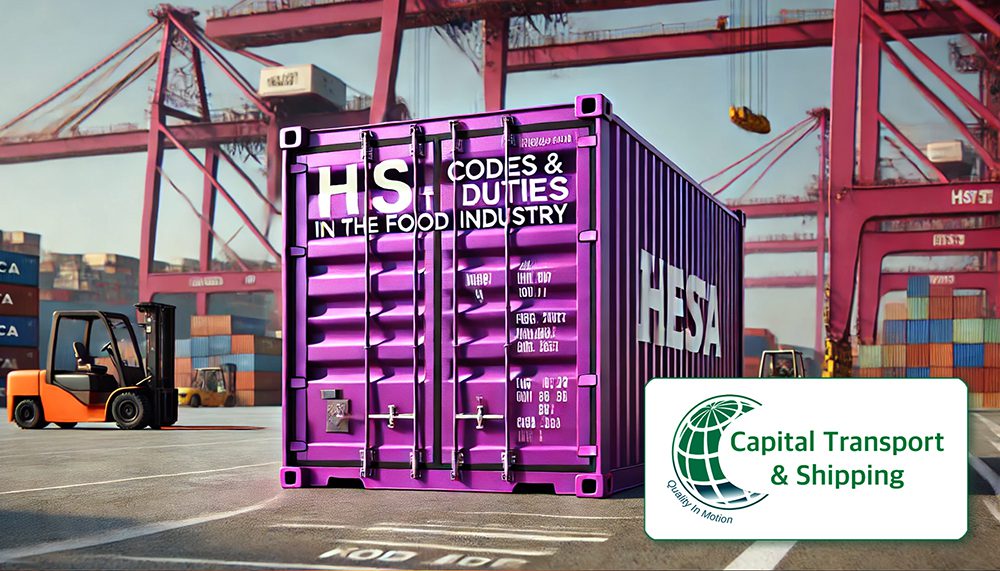What Buyers Need to Know (UK vs EU)
If you’re importing food products into the UK or EU, understanding HS codes and customs duties isn’t just a formality—it’s essential for keeping your goods moving and your margins healthy.
Whether you’re shipping frozen berries, canned vegetables, cheese, or confectionery, here’s what food importers need to know. We identified this as a key question during a recent visit to the IFE Event in London.
🧾 What is an HS Code?
An HS code (Harmonised System code) is an internationally standardised number used to classify traded goods. For food products, this might cover everything from chocolate to seafood to fruit purée.
Food items often fall into Chapters 02–23 of the HS system, such as:
- Chapter 04: Dairy products, eggs
- Chapter 08: Edible fruit and nuts
- Chapter 19: Preparations of cereals, flour, starch (e.g. biscuits, bread)
- Chapter 21: Miscellaneous food preparations (e.g. sauces, desserts)
The code you use determines:
- What import duty and VAT apply
- Whether certificates (e.g. health certs, organic certs) are required
- If quotas or trade preferences are in place
EU vs UK: The Key Differences
| Feature | EU (CN Code) | UK (Commodity Code) |
|---|---|---|
| Digits Used | 8-digit CN code | 10-digit code |
| Database | TARIC | UK Trade Tariff Tool |
| Rules of Origin | EU Free Trade Agreements | UK-specific FTAs post-Brexit |
| Customs Declarations | Via EU customs systems | Via UK’s CDS system |
🔍 Important: The codes are often similar—but duty rates, documentation requirements, and even sanitary rules may differ.
Examples from the Food Industry
Let’s break this down with real examples:
Example 1: Chocolate Bars
- HS Code: 1806.32
- Duty in the EU: 8.3% (if not under a preferential agreement)
- Duty in the UK: 8% (unless reduced under an FTA)
Example 2: Frozen Strawberries
- HS Code: 0811.10.11
- Duty in the EU: 12%
- Duty in the UK: May vary based on country of origin
Example 3: Cheese (e.g. Camembert, Cheddar)
- HS Code: 0406.20
- EU Duties: Can be high (20–40%), unless within EU or under an FTA
- UK Duties: Also high if no preferential origin — but can be 0% from countries like New Zealand or Australia
💡 How to Get the Right Code and Rate
For the EU, use the TARIC database
For the UK, use the UK Integrated Tariff Tool
Check country of origin and any trade agreements (e.g. EU–Japan EPA, UK–Australia FTA)
📌 Tip: Misclassification can lead to delays, inspections, and even financial penalties. Always double-check.
📦 For Food Importers: Don’t Forget
✅ Health certificates may be required
✅ Import licences can apply for some dairy, meat, or animal-based products
✅ Customs duty is just one cost—VAT is also added on top
✅ Packaging, labelling, and sanitary checks differ between UK and EU
Final Thoughts
If you’re importing food into the UK or EU, getting the HS code and customs classification right is non-negotiable. It affects duty, documentation, and delivery times.
Need help decoding the right HS code or calculating your import costs? Let’s connect—We are always happy to share insights or tools that can help.
As of 31 January 2025, all goods imported from the European Union into Great Britain must be accompanied by a safety and security declaration, commonly known as an Entry Summary Declaration (ENS). Continue reading about the New UK Safety & Security Declarations
Partnering with Capital Transport ensures that your food transportation needs are met with the highest standards of compliance and professionalism, allowing you to focus on your core business with peace of mind. Contact us today to learn more.




